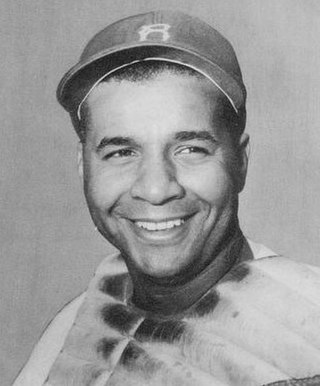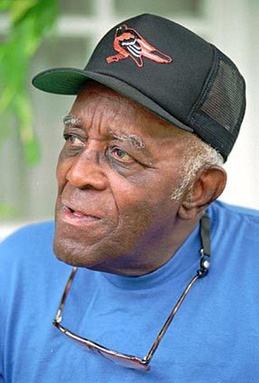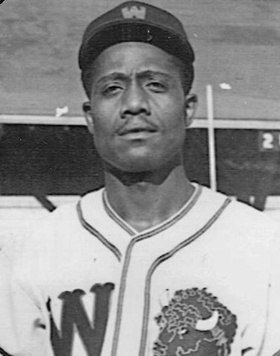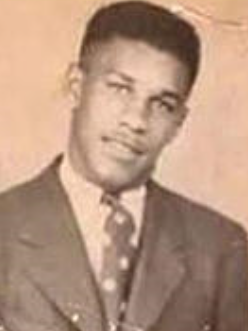Related Research Articles
The Negro leagues were United States professional baseball leagues comprising teams of African Americans. The term may be used broadly to include professional black teams outside the leagues and it may be used narrowly for the seven relatively successful leagues beginning in 1920 that are sometimes termed "Negro Major Leagues".

Roy Campanella, nicknamed "Campy", was an American baseball player, primarily as a catcher. The Philadelphia native played in the Negro leagues and Mexican League for nine years before entering the minor leagues in 1946. He made his Major League Baseball (MLB) debut in 1948 for the Brooklyn Dodgers, for whom he played until 1957. His playing career ended when he was paralyzed in an automobile accident in January 1958. He is considered one of the greatest catchers in the history of the game.

Leon Day was an American professional baseball pitcher who spent the majority of his career in the Negro leagues. Recognized as one of the most versatile athletes in the league during his prime, Day could play every position, with the exception of catcher, and often was the starting second baseman or center fielder when he was not on the mound. A right-handed pitcher with a trademark no wind-up delivery, Day excelled at striking batters out, especially with his high-speed fastball. At the same time, he was an above-average contact hitter, which, combined with his effectiveness as a baserunner and his tenacious fielding, helped cement Day as one of the most dynamic players of the era.
The Negro American League was one of the several Negro leagues created during the time organized American baseball was segregated. The league was established in 1937, and disbanded after its 1962 season.
The second Negro National League was one of the several Negro leagues that were established during the period in the United States when organized baseball was segregated. The league was founded in 1933 by businessman Gus Greenlee of Pittsburgh.
The color line, also known as the color barrier, in American baseball excluded players of black African descent from Major League Baseball and its affiliated Minor Leagues until 1947. Racial segregation in professional baseball was sometimes called a gentlemen's agreement, meaning a tacit understanding, as there was no written policy at the highest level of organized baseball, the major leagues. A high minor league's vote in 1887 against allowing new contracts with black players within its league sent a powerful signal that eventually led to the disappearance of blacks from the sport's other minor leagues later that century, including the low minors. After the line was in virtually full effect in the early 20th century, many black baseball clubs were established, especially during the 1920s to 1940s when there were several Negro leagues. During this period, American Indians and native Hawaiians, e.g. Prince Oana, were able to play in the Major Leagues. The color line was broken for good when Jackie Robinson signed with the Brooklyn Dodgers organization for the 1946 season. In 1947, both Robinson in the National League and Larry Doby with the American League's Cleveland Indians appeared in games for their teams. By the late 1950s, the percentage of black players on Major League teams matched or exceeded that of the general population.
The Chicago American Giants were a Chicago-based Negro league baseball team. From 1910 until the mid-1930s, the American Giants were the most dominant team in black baseball. Owned and managed from 1911 to 1926 by player-manager Andrew "Rube" Foster, they were charter members of Foster's Negro National League. The American Giants won five pennants in that league, along with another pennant in the 1932 Negro Southern League and a second-half championship in Gus Greenlee's Negro National League in 1934.

The Baltimore Elite Giants were a professional baseball team that played in the Negro leagues from 1920 to 1950. The team was established by Thomas T. Wilson, in Nashville, Tennessee as the semi-pro Nashville Standard Giants on March 26, 1920. The team was renamed the Elite Giants in 1921, and moved to Baltimore, Maryland in 1938, where the team remained for the duration of their existence. The team and its fans pronounced the word "Elite" as "ee-light".

The East–West All-Star Game was an annual all-star game for Negro league baseball players. The game was the brainchild of Gus Greenlee, owner of the Pittsburgh Crawfords. In 1933 he decided to emulate the Major League Baseball All-Star Game, using Negro league players. Newspaper balloting was set up to allow the fans to choose the starting lineups for that first game, a tradition that continued through the series' end in 1962. Unlike the white All-Star game which is played near the middle of the season, the Negro All-Star game was held toward the end of the season.
The National Colored Base Ball League, the National Colored League, or the League of Colored Baseball Clubs was the subsequent attempt, after the Southern League of Colored Base Ballists, to have a league consisting of all-black teams. It predated Rube Foster's Negro National League by over three decades.
Bugle Field was a Baltimore based, predominantly wooden stadium utilized by the two primary Negro league teams of the 1916 to 1950 era, the Baltimore Black Sox, (1916-1933), and the Baltimore Elite Giants, (1938-1950). The Black Sox had a short tenure at the park, moving into the park permanently in 1932 before folding during the 1934 season. The Elite Giants were the park's primary tenants until its dismantlement during the 1949 Negro National League Championship Series. It was located on the northeast corner of Federal Street and Edison Highway, address 1601 Edison Highway. The site is in use today as the headquarters and local manufacturing plant of Rockland Industries, the first major corporation on record in Baltimore County, Maryland.
The 1948 Negro World Series was the championship tournament for the 1948 season of Negro league baseball. It was the seventh edition of the second incarnation of the Negro World Series and the eleventh overall played. It was a best-of-seven playoff played between the Homestead Grays of the Negro National League and the Birmingham Black Barons, champions of the Negro American League. The Homestead Grays played home games in both Washington, D.C., and Pittsburgh. It was the fifth appearance for the Grays in the Series, the most for any team; Birmingham made their third appearance in the Series, with each being against the Grays. The Grays won the series in five games. The Black Barons featured the 17-year-old Willie Mays in his first professional season.
Stanley Vincent Miarka was one of the five white professional baseball players to be the first to join the Negro American League. He was signed to the Chicago American Giants in 1950 by Ted "Double Duty" Radcliffe with the support of the team's owner, Dr. J.B. Martin, who was concerned about black players joining Major League teams. The other four young white players were Lou Chirban, Lou Clarizio, Al Dubetts and Frank Dyall.
The Memphis Red Sox were an American Negro league baseball team that was active from 1920 to 1959. Originally named the Barber College Baseball Club, the team was initially owned and operated by Arthur P. Martin, a local Memphis barber. In the late 1920s the Martin brothers, all three Memphis doctors and businessmen, purchased the Red Sox. J. B. Martin, W. S. Martin, and B. B. Martin, would retain control of the club till its dissolution in 1959. The Red Sox played as members, at various times, of the Negro Southern League, Negro National League, and Negro American League. The team was never a titan of the Negro leagues like wealthier teams in northern cities of the United States, but sound management lead to a continuous thirty-nine years of operation, a span that was exceeded by very few other teams. Following integration the team had five players that would eventually make the rosters of Major League Baseball teams and two players that were inducted into the Baseball Hall of Fame.

Henry Frazier Robinson, nicknamed "Slow", was an American Negro league catcher for the Kansas City Monarchs, New York Black Yankees, and Baltimore Elite Giants between 1942 and 1950.

Norman Wayne Robinson was an American Negro league outfielder for the Baltimore Elite Giants and Birmingham Black Barons between 1940 and 1952.
Alvin "Bubber" Gipson, Sr. was an American Negro league pitcher in the 1940s. A native of Shreveport, Louisiana, Gipson spent most of his career in Birmingham as a mainstay of the Black Barons' pitching staff.

Wesley "Big Train" Barrow was an American Negro league player and manager in the 1940s who was once regarded as "one of the best developers of Negro talent in the South."

Joseph Lewis Campinha, also known as Joe Campini, was a Cape Verdean-American Negro league catcher in the 1940s. He is believed to be the first professional baseball player of Cape Verdean descent.
References
- 1 2 3 Bob Luke (2009). The Baltimore Elite Giants. JHU Press. ISBN 0801891167.
- 1 2 "Elite Giants To Play Today". The Baltimore Sun. May 1, 1949. p. Sports 8 – via Newspapers.com.
- ↑ Frazier Robinson (1999). Catching Dreams: My Life in the Negro Baseball Leagues. Syracuse University Press. p. 150.
- ↑ "Green, Elite Owner, Dies". The Baltimore Sun. May 28, 1949 – via Newspapers.com.